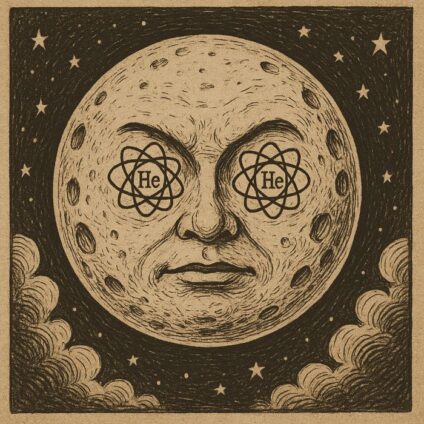Patent Milestone: Lunar Helium-3 Mining (LH3M) secures five U.S. patents for lunar helium-3 extraction technologies.
Strategic Importance: Helium-3 is essential for clean fusion energy and quantum computing solutions.
Global Competition: LH3M aims to maintain U.S. leadership against China’s lunar mining ambitions.
The Race for Lunar Helium-3
Lunar Helium-3 Mining (LH3M), based in Scottsdale, Arizona, has secured five U.S. patents, establishing the United States as a leader in extracting helium-3 from the Moon. This rare isotope, scarce on Earth but abundant on the lunar surface, offers significant potential for clean energy through nuclear fusion and supports quantum computing. With global energy demands increasing and fossil fuels accounting for 70% of electricity production, sustainable alternatives are critical. LH3M’s mission to mine helium-3 addresses this need, providing a pathway to safer, neutron-free fusion energy and improved quantum computing capabilities. For example, the company’s lunar-specific technologies distinguish it in a competitive race, particularly against China’s stated goal to mine lunar helium-3.
Helium-3, deposited on the Moon by solar winds over billions of years, is a valuable resource. The Moon’s lack of atmosphere, unlike Earth’s magnetic shielding, allows helium-3 to accumulate in its regolith. Helium-3's isotope properties make it ideal for fusion reactors, generating energy without the radioactive waste produced by tritium-based systems. Moreover, helium-3 is vital for cooling quantum computers to near absolute zero, ensuring operational stability. LH3M’s patented systems are designed for the Moon’s harsh conditions: Helium-3's low concentrations and abrasive regolith, which can damage equipment. Consequently, the company’s advancements enable lunar mining with a potential $17 trillion annual return, driven by global demand for clean energy and quantum computing infrastructure.
Technology Tailored for Lunar Challenges
LH3M’s five patents encompass a complete system for detecting, extracting, and refining helium-3, specifically designed for the lunar environment. Unlike competitors using adapted terrestrial technologies, LH3M employs a Moon-first approach. For example, LH3M's systems specifically address the abrasive lunar regolith, which damaged equipment during Apollo missions. The company’s team, led by CEO Chris Salvino, is developing an integrated platform to process regolith efficiently, using advanced detection methods including mass spectrometry and neutron detection systems for precise helium-3 identification. By focusing solely on lunar helium-3, LH3M establishes a strong foundation for future missions, avoiding the limitations of repurposed earthly technologies.
"This is about more than innovation—it's about survival," said Chris Salvino, LH3M CEO. "Without helium-3, we lose the ability to deliver scalable green energy, quantum capability, and strategic defense advantages the U.S. cannot afford to cede."
— Chris Salvino, CEO, Lunar Helium-3 Mining, LLC
Strategic Implications and Global Competition
The global competition for helium-3 is escalating, with China pursuing lunar mining through their Chang’e 4 and 5 missions, which have studied lunar regolith for helium-3. If China secures a reliable supply first, it could lead in fusion energy and quantum computing, gaining advantages in encryption and military readiness. LH3M’s patents position the U.S. to counter this challenge, ensuring technological leadership. The company actively seeks development grants and partnerships to operationalize its platform, planning to deploy mining technologies on lunar rovers by the decade’s end. For example, LH3M collaborates with U.S. and European rover companies to integrate its detection systems, enhancing mission efficiency. This approach highlights LH3M’s commitment to practical solutions.
A Vision for Sustainable Energy
LH3M’s work extends beyond energy production, shaping a future where clean energy and quantum technology drive global progress. Mining the Moon, once a distant concept, is now a viable frontier. LH3M’s sustainable, non-invasive technologies align with efforts offering an alternative to fossil fuels and nuclear fission. Led by Salvino, with expertise in aerospace engineering and planetary geology, LH3M is equipped to address technical and logistical challenges.


